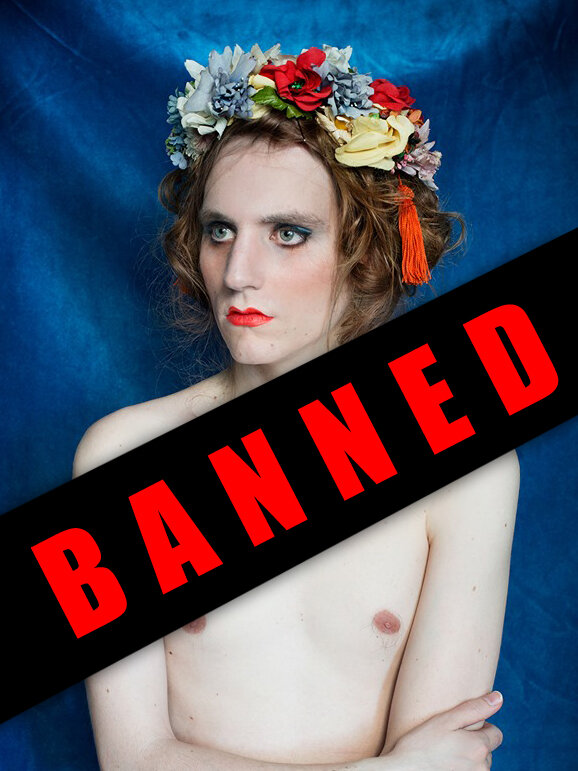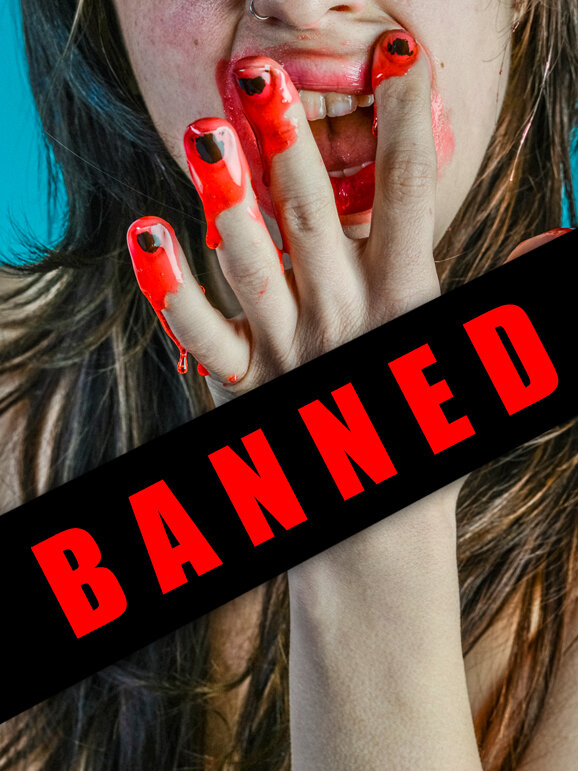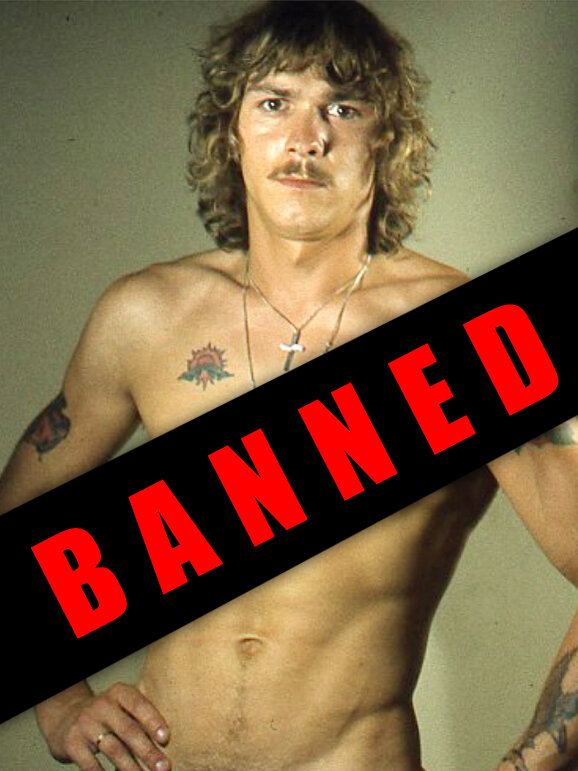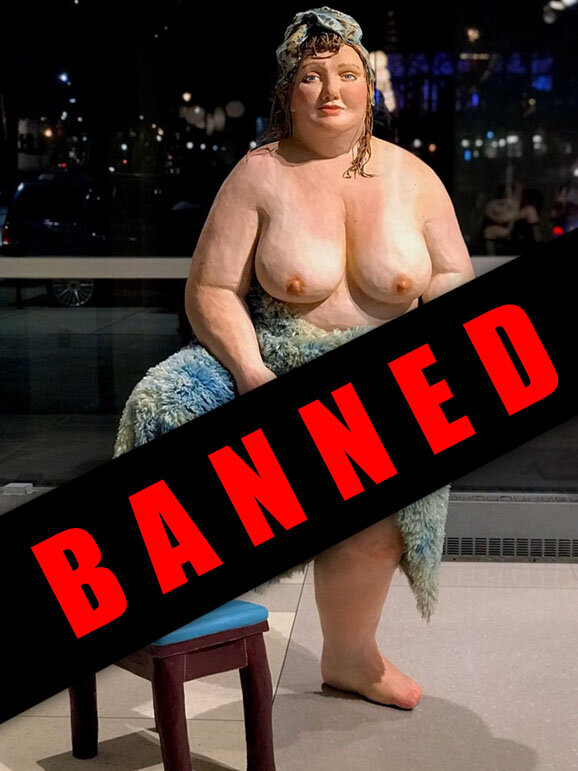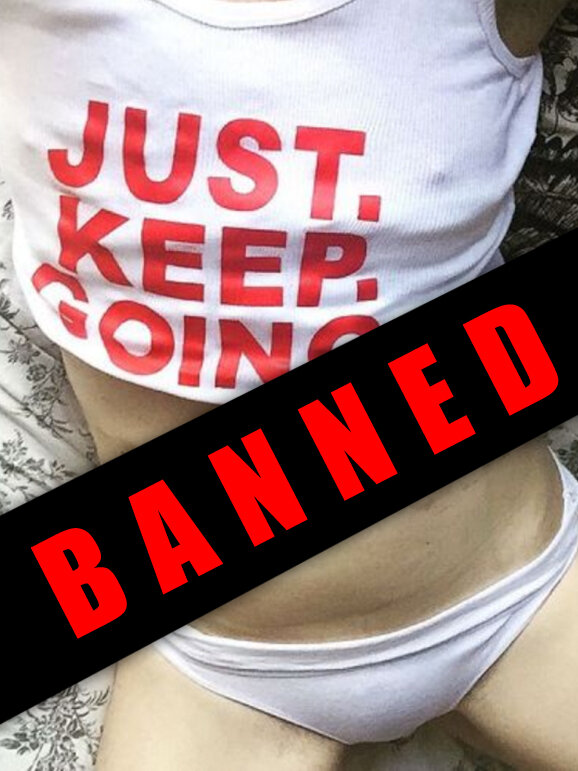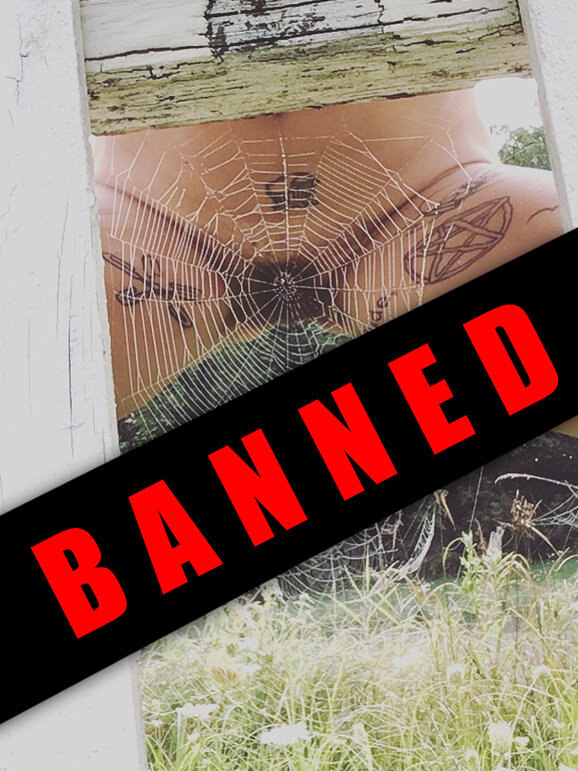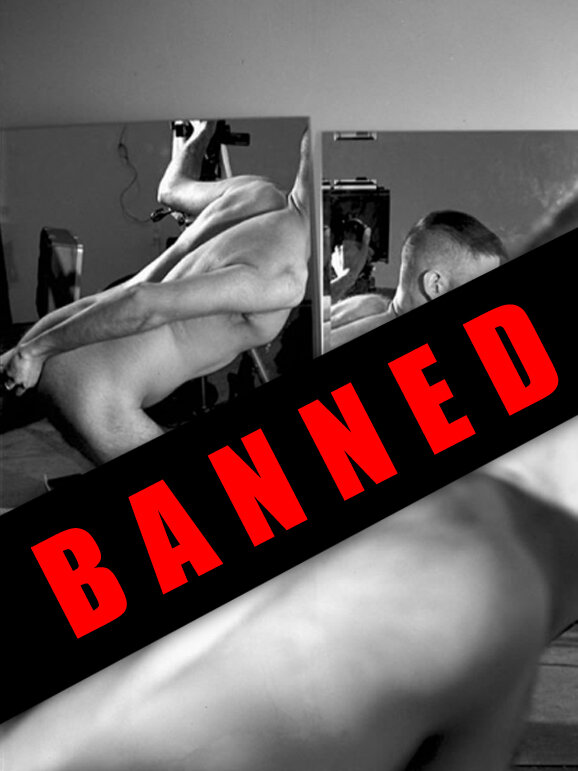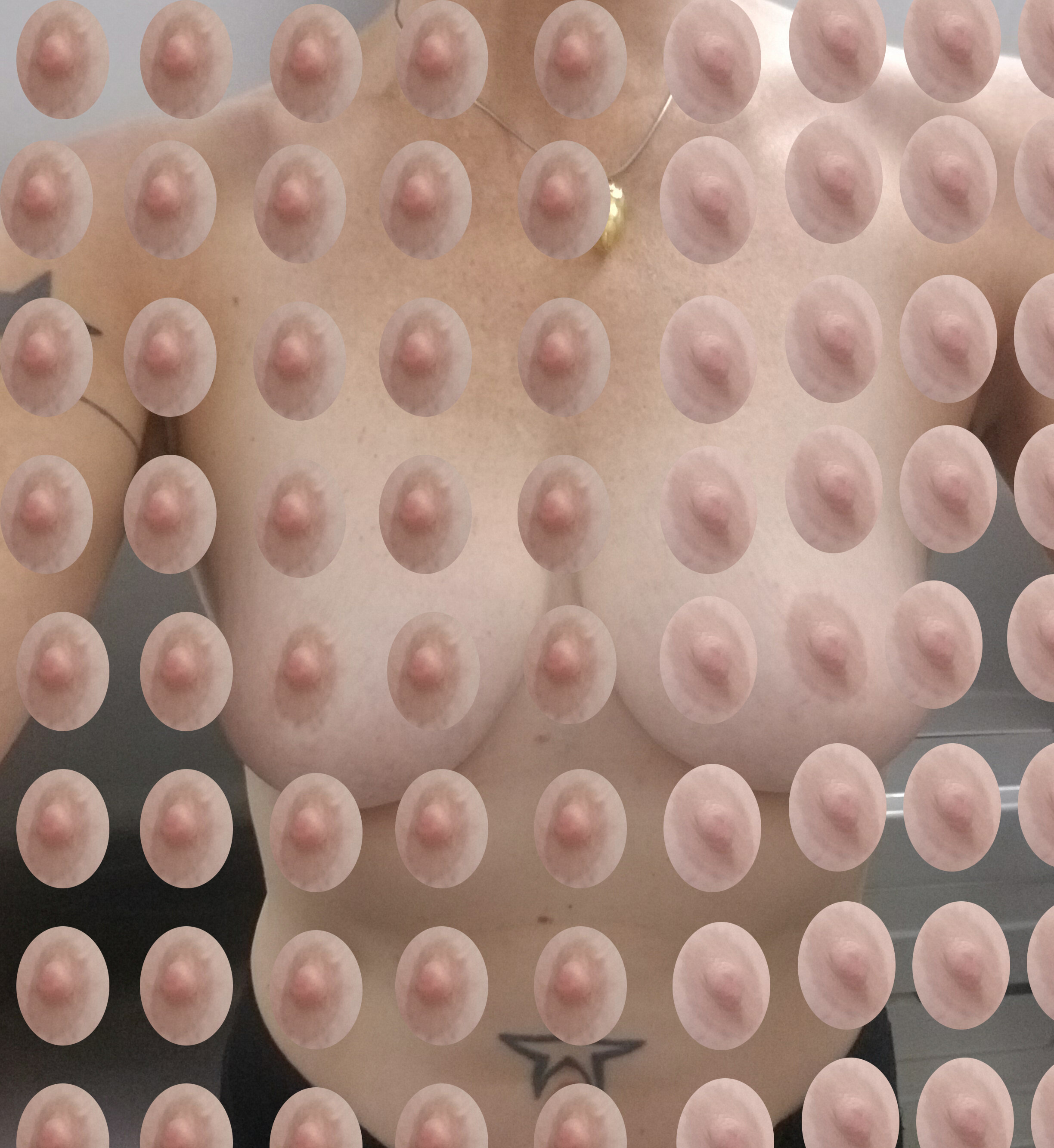INTRODUCTION
In late 2017 Social Media censorship took the spotlight when an image of The Venus of Willendorf, posted by social activist Laura Ghianda, was removed by Facebook. That an ancient sculpture, abstracted female figure, was classified as “obscene” shocked the arts community. Turns out this censorship was the tip of the iceberg and removing artwork is common practice on social media. Artists like Micol Hebron and Christen Clifford have been protesting Social Media censorship since 2014. More recently artist Clarity Haynes 2018 essay titled “I’m a Queer Feminist Artist. Why Are My Paintings Censored on Social Media?” weaves a compelling personal narrative of how social media policies, intended to protect users, are in fact crushing and silencing artist’s voices.
WHY INSTAGRAM?
In today’s limited attention span / media rich world, social media is how creatives stay connected and informed. Instagram and Facebook have over 3 billion users worldwide. Over 60% of internet users ages 18 and 29 use Instagram. 70% of United States teenagers are on the platform. Instagram is a cultural juggernaut and unfathomably influential on the next generation.
Instagram is also crucial for contemporary artists to promote themselves. Galleries and fans are discovering new artist through Instagram. Collectors are purchasing art through Instagram. The phrase “artists must be on Instagram” has become a mantra for creatives hoping to develop a following.
Though social media is driven by user content, their policies dictate what users can and can’t post. Through policies that are unclear and hypocritical, Instagram / Facebook develops a culture of fear and anxiety among creators. Users are afraid to post “un-edited” content and must think twice before expressing their voices.
Artists / LGBTQ communities / users with non-conforming bodies have all had posts deleted, accounts erased, generally blocked from the mainstream feed, and even blocked from their own followers. This happens at crucial times like promoting upcoming shows and events.
One artist Shona McAndrew is currently blocked from the mainstream feed because she makes nude plus sized sculptures. Another artist, Steve Locke, had work deleted for including the word “faggot”, even though his work clearly speaks against homophobia. Kyle Quinn, who runs an online gay bookstore, had his account deleted 3 times. Other Artists like Tiffany Saint Bunny have been harassed and flagged unfairly with no recourse to out their accusers.
Instagram’s Shadow takes it’s title from the well documented Instagram “Shadow Ban” punishment. Though Instagram does not acknowledge the term “Shadow Ban”, it is real. Shadow Bans keep artists from reaching audiences. It represents the seedy underbelly of Instagram’s policy, and illustrates Instagram’s nefarious doppelganger. Shadow Bans allows instagram to throw a dark cloak over large segments of its user base, making them tangibly invisible. This shadow analogy is both psychological and quite literal.
WHAT ARE INSTAGRAM POLICIES
Instagram’s community guidelines read: “We know that there are times when people might want to share nude images that are artistic or creative in nature, but for a variety of reasons, we don’t allow nudity on Instagram. This includes photos, videos, and some digitally-created content that show sexual intercourse, genitals, and close-ups of fully-nude buttocks. It also includes some photos of female nipples, but photos of post-mastectomy scarring and women actively breastfeeding are allowed. Nudity in photos of paintings and sculptures is OK, too.”
These policies are stated for the “good of the greater community” and on face value they are to stop acts of child pornography, revenge porn, or blackmail. They are also attempting to make Instagram a safe space for those with triggers. HOWEVER these policies have huge ramifications both unintended for users and suspiciously convenient for Instagram.
POLICY ENFORCEMENT
Over 95 million photos are posted to Instagram every day. To police these images Instagram employs an image/text recognition algorithm to crawl through every photo. Instagram staff call this robot a “tool” and to supplement this tool human beings are hired to verify flagged photos. There are about 30,000 human moderators world wide and they are rumored to last on average 6 months on the job.
Once violations are flagged, increasingly severe punishments are automatically given for the severity and frequency of the violation. Specifics are not public, but the analogy of a “3 strikes your out” system fits. Users can appeal flagged posts, and more recently appeals do seem to be working. However this system is far from perfect and many artists find themselves appealing to a wall of silence.
Instagram is a community network. There are three spheres of community on the platform. Personal (The user, reflected by their personal archive), The Community (a user’s followers), and The Mainstream (all 1.5 billion Instagram users). When users violate Instagram’s policy, their connectivity to each of these three spheres is throttled as a punishments.
In addition, Instagram “unwittingly” hosts an army of users who enforce (sometimes erroneously) their policies. At first glance self policing is a great idea, however it invites internet trolls to forward hateful personal agendas. “Trolls” are commonly defined as users who make purposefully offensive comments, and the term is also a reference to the fishing expression. “Trolling” is a user scouring the internet looking for particular content. Instagram has trolls searching the platform for LGBTQ content and non-normative bodies. These images appear to be flagged in great frequency, and though there are tiers of violations for users there appear to be no policy regarding trolls who do Instagram a favor by highlighting accounts that should be sterilized for mainstream consumption. Also if a falsely flagged post is reinstated, Instagram protects the trolls anonymity. The troll can continue to follow / flag their victim. Adding insult to injury it is possible those false flags are kept on the users permanent violation record.
POLICY EFFECTS
Instagram’s perspective is that policing 95 million photos daily will result in collateral damage. Unfortunately the communities hit hardest by these false flags are those who have traditionally suffered under “mainstream” governance.
Anti nudity policies have far reaching effects. Instagram bans genitalia and pubic hair for their “sexual nature”, going against the historical artistic value found in the natural human form. The nudity vs obscenity conversation gets murkier because Instagram distinguishes between male and female nipples. Male nipples are allowed to be posted, but female nipples are banned. This policy has deep repercussions. It inherently sexualized women “categorizing them as sexual objects to be consumed – and worse, that consumption is some kind of elicit pleasure, for which the female body should be punished by being silenced and unseen” (Micol Hebron).
Instagram’s policy also reinforces normative beauty standards. They hide behind a nudity policy to enforce a standard of fat shaming, banning plus-sized, and hiding non-normative bodies. These negative effects of Instagram policies are exacerbated by their secretive “black box” nature. Sometimes enforced and sometimes not, artists don’t know how or when punishment will rain down upon them. The key words we hear from artists are “FEAR and ANXIETY”. There are no clear rules and policy is illusive. Users are encouraged to increasingly self edit their voices. Not to mention the double standard where celebrity power users are able to post increasingly sexualized nude content. Instagram has two classes of users, those with the freedom to post and those without.
Missing from Instagram’s policy is CONTEXT. Using algorithms and trolls, Instagram fosters a “McCarthyist” culture where artists are fearful of blacklists and shadow bans. There is no distinction between pornography and fine art photography, exploitive hateful content and artworks fighting mainstream biases.
WHAT’S NEXT
Under Instagram’s heavy shadow peaks a tiny ray of light. The company knows their policies effect artist, LGBTQ and non-conforming communities. In October 2019 Instagram hosted a meeting to discuss these issues with artists. Unfortunately little actionable data was made public from this meeting and Instagram continues to censor artists while still allowing celebrity nudity, objectification of women, rape, drug use, racism, gun violence, and hateful content.
Like all censorship struggles, we must keep fighting back and keep being vocal. Instagram’s Shadow shows how artists are changing their work, censoring themselves, and finding clever ways to undermine oppressive algorithms and trolls. Through the stories of 17 artists we discover how artists are being censored and fighting back.


